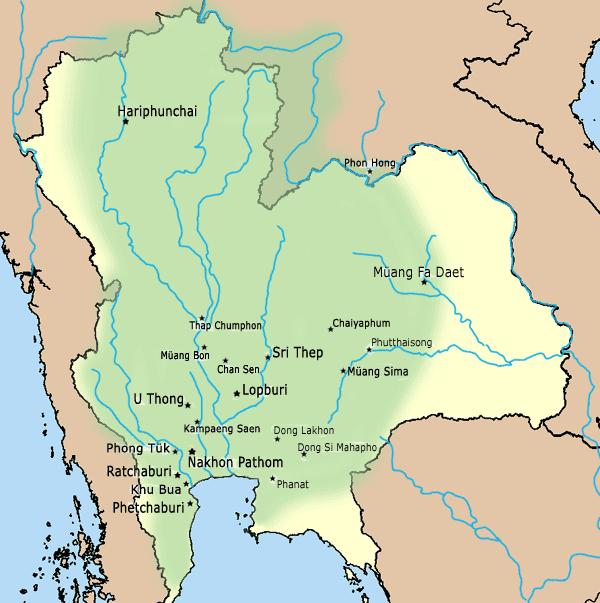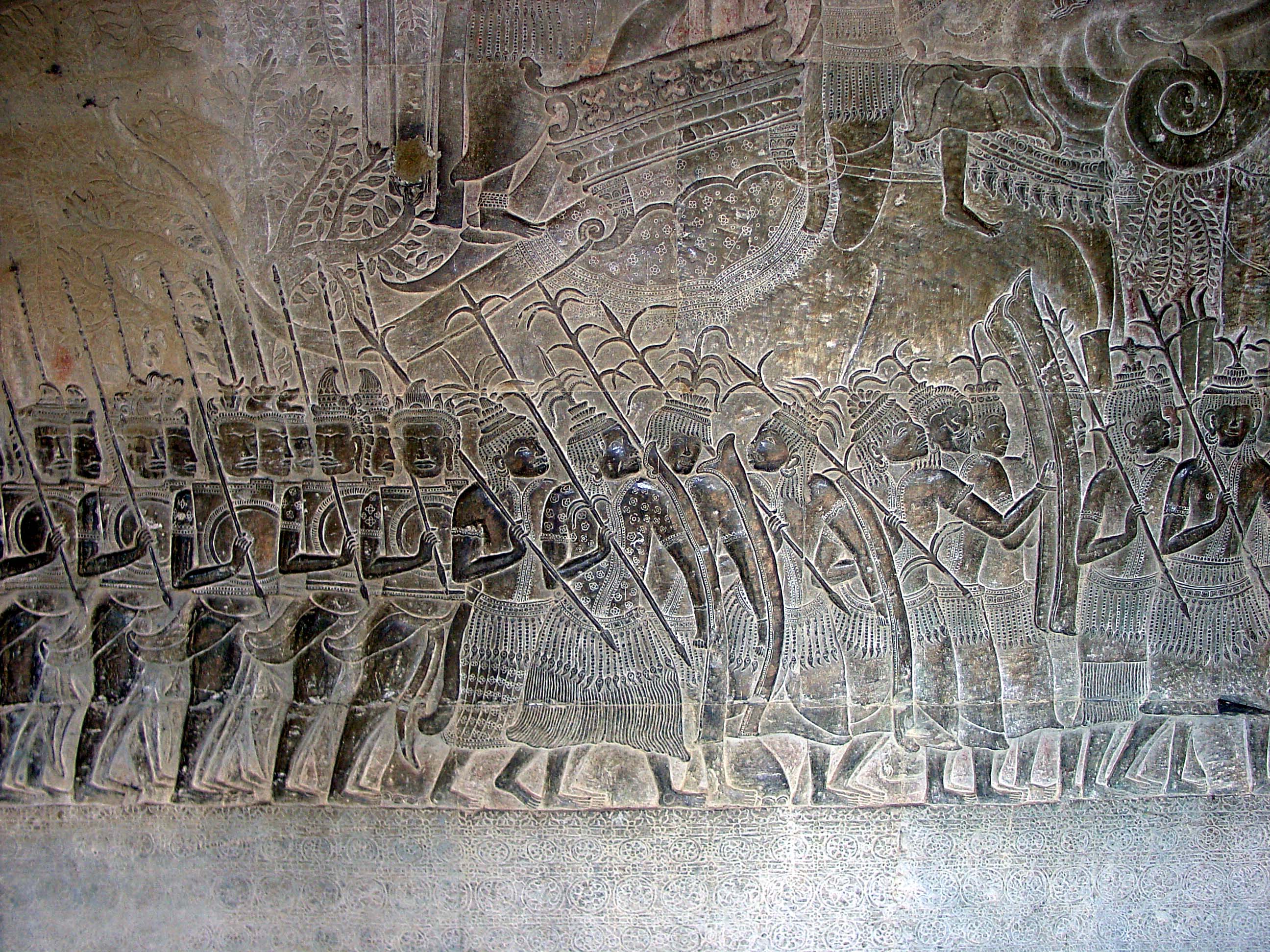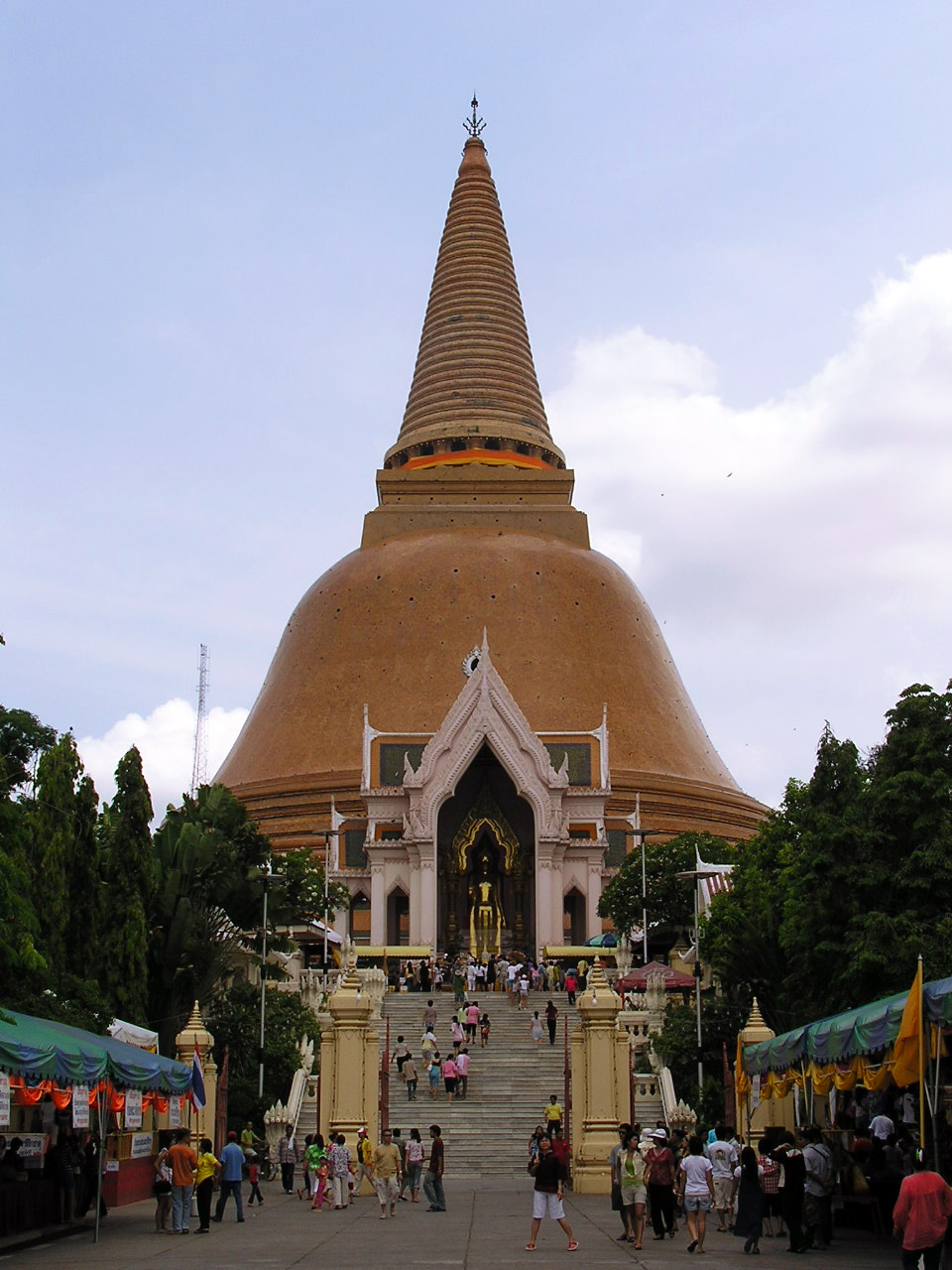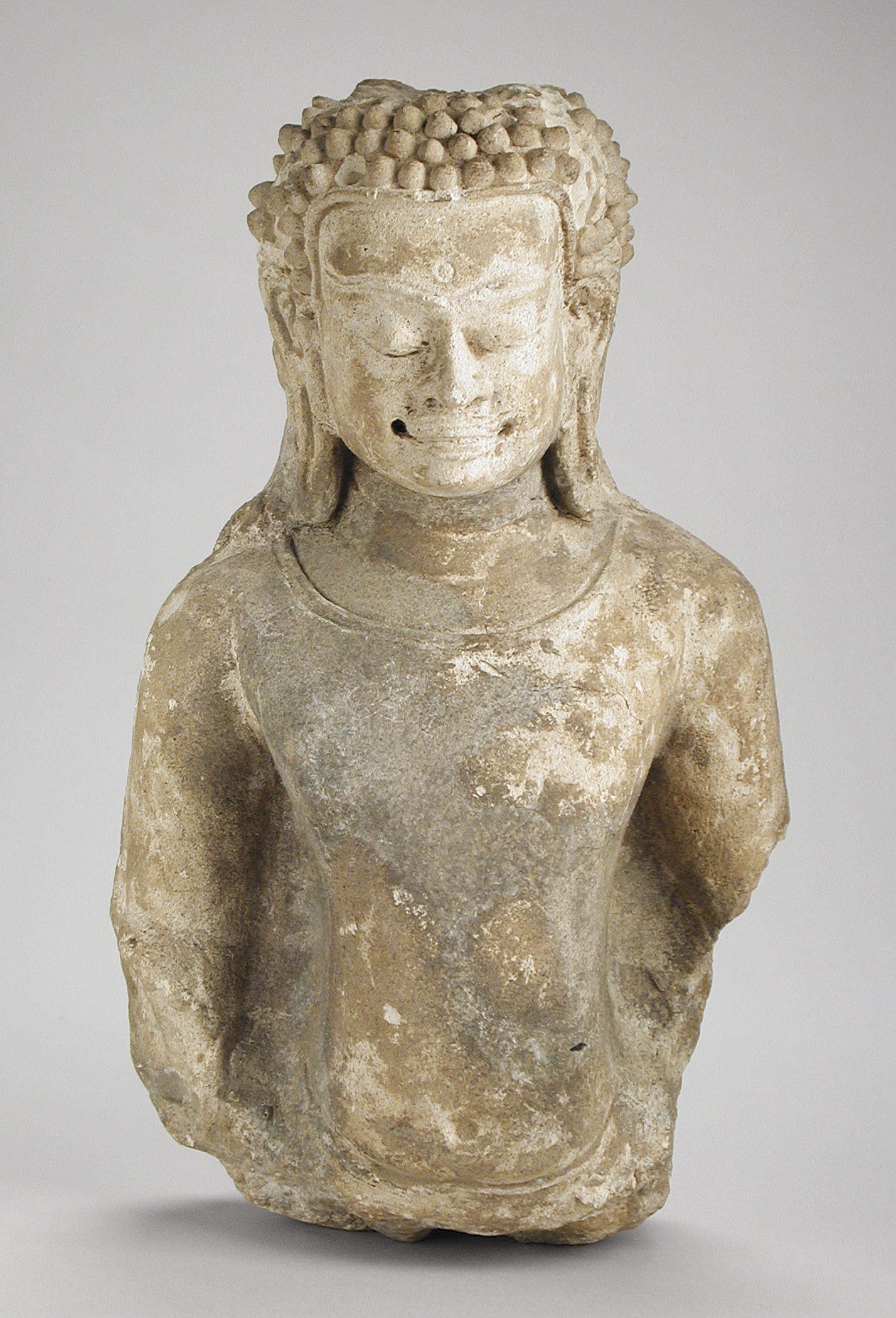|
Suphannabhum
Suphannabhum or Suvarnabhumi; later known as Suphan Buri () was a Siamese city-state, that emerged in the early "Siam proper" which stretched from present-day west central Thailand to the north of the Kra Isthmus, with key historical sites at Mueang Uthong, Uthong, Nakhon Pathom, Suphan Buri, and . The kingdom is referred to as ''Xiān'' in the Chinese records since 1349, but according to the archaeological evidence in Suphan Buri, it was speculated to have emerged around the mid-12th century. However, a calculation made by Borihan Thepthani based on the information provided in the says that the city of Suphan Buri was founded in 877 and became a free city-state after Nakhon Pathom of Kamalanka fell to Phetchaburi in 913. Suphannabhum became the center of ''Xiān'', succeeding Phip Phli, no later than 1349, when ''Xiān'' was defeated by ''Luó hú'' (Lavo Kingdom, Lavo) and the tribute sent to China under the name of ''Xiānluó hú'' (Siam-Lavo or Ayutthaya Kingdom) was led by ... [...More Info...] [...Related Items...] OR: [Wikipedia] [Google] [Baidu] |
Phip Phli
Phrip Phri () or Srijayavajrapuri, later known as Phetchaburi, was a Xiān political entity located on the west coast of the Bay of Bangkok, lower central Thailand. It was established in the 12th century by a royal Pprappanom Tteleiseri from Soucouttae/Locontàï. Previously, the city was a maritime-oriented port on the ancient trade route between India and China during the Dvaravati period, but was abandoned around the 11th century following the decline of the Dvaravati civilization. In the 12th century, Phrip Phri was possibly under Lavo Kingdom, Lavo's Ayodhya since several royals from Ayodhya were appointed the rulers of Phrip Phri, as mentioned in local chronicles and legends. It then became the vassal of the emerging Siamese Sukhothai Kingdom, Sukhothai and later formed part of the Ayutthaya kingdom in 1351, which made it functioned as a significant fortified frontier of Ayutthaya. History Early settlements Human settlement in Phetchaburi dates back to the prehistoric era, a ... [...More Info...] [...Related Items...] OR: [Wikipedia] [Google] [Baidu] |
Lavo Kingdom
The Lavo Kingdom () was a political entity (Mandala (Southeast Asian political model), mandala) on the left bank of the Chao Phraya River in the Upper Chao Phraya valley from the end of Dvaravati civilization, in the 7th century, until 1388. The original center of Lavo was Lopburi, Lavapura and was shifted to Ayodhya (Xiān) in the 1080s. However, since both Ayodhya or Xiān and Lavo separately sent embassies to the Chinese court in the late 1200s, these two polities were potentially individual states. Before the 9th century, Lavo, together with other supra-regional settlements, such as Si Thep Historical Park, Si Thep, , Phimai Historical Park, Phimai, Nakhon Pathom, and others were the centers of the Mandala (political model), mandala-style polities of Dvaravati. Due to several circumstances, including climate changes and the invasions of the surrounding polities, several Dvaravati centers lost their prosperity, and the mandalas in the Chao Phraya River, Menam Valley was then s ... [...More Info...] [...Related Items...] OR: [Wikipedia] [Google] [Baidu] |
Chen Li Fu
Chên Li Fu (; ) or Suvarnapura was a political entity located on the north shore of the Gulf of Siam, west of Chenla. It centered at the ancient Mueang Uthong. The area encompassed the western Chao Phraya River, Chao Phraya Basin, present-day Phetchaburi province, and Prachuap Khiri Khan province of Thailand, bordering ''Po-Ssu-lan'' to the southeast and Tambralinga to the south. Chên Li Fu sent tribute to the Chinese court in 1200 and 1205. Later, it evolved to Suphannabhum and was then merged into the Ayutthaya Kingdom in the 14th century. Chên Li Fu was supposed to be one of the main polities under the Dvaravati civilization, together with the Lavo Kingdom in the eastern basin. Modern scholars believe Chen Li Fu was Siamese Suphannabhum. Chên Li Fu was a short-lived polity, as mentioned in the Nakhòn Si Thammarat source, which states that King Mahesvastidrādhirājakṣatriya of Phip Phli (Phetchaburi), expanded his territory northward to Phraek Si Racha (in present-day Ch ... [...More Info...] [...Related Items...] OR: [Wikipedia] [Google] [Baidu] |
Xiān
Xiān ( zh, 暹) or Siam () was a confederation of maritime-oriented port polities along the present Bay of Bangkok, including Ayutthaya Kingdom#Pre-Ayutthaya cities, Ayodhya, Suphannabhum, and Phip Phli Kingdom, Phip Phli, as well as Nakhon Si Thammarat Kingdom, Nakhon Si Thammarat (Ligor), which became Siam in the late 13th century. Previous studies suggested that ''Xiān'' in Chinese dynasty records only referred to Sukhothai Kingdom, Sukhothai, but this presupposition has recently been rebutted. Xiān was formed from city-states on the west Chao Phraya River, Chao Phraya plain after the decline of Dvaravati in the 11th century. In 1178, the region was mentioned in the term ''San-lo '', as recorded in the Chinese Lingwai Daida, in which Thai scholars suggest it was plausibly referred to Mueang Chaliang, Chaliang's new center, Si Satchanalai Historical Park, Sawankhalok. Xiān or Siam, which was also recorded as Suphannabhum, Suphan Buri and Nakhon Si Thammarat Kingdom, Nakho ... [...More Info...] [...Related Items...] OR: [Wikipedia] [Google] [Baidu] |
Ayutthaya Kingdom
The Ayutthaya Kingdom or the Empire of Ayutthaya was a Thai people, Thai kingdom that existed in Southeast Asia from 1351 to 1767, centered around the city of Phra Nakhon Si Ayutthaya (city), Ayutthaya, in Siam, or present-day Thailand. European travellers in the early 16th century called Ayutthaya one of the three great powers of Asia (alongside Vijayanagara Empire, Vijayanagara and China). The Ayutthaya Kingdom is considered to be the precursor of modern Thailand, and its developments are an important part of the history of Thailand. The name Ayutthaya originates from Ayodhya (Ramayana), Ayodhya, a Sanskrit word. This connection stems from the Ramakien, Thailand's national epic. The Ayutthaya Kingdom emerged from the Mandala (political model), mandala or merger of three maritime city-states on the Lower Chao Phraya Valley in the late 13th and 14th centuries (Lopburi province, Lopburi, Suphan Buri province, Suphanburi, and Ayutthaya). The early kingdom was a maritime confedera ... [...More Info...] [...Related Items...] OR: [Wikipedia] [Google] [Baidu] |
Kamalanka
Kamalanka (''Chia-mo-lang-chia'', ''Lang-chia'', ''Lang-ya-hsiu'') or Kolo (''Gē Luó'') in the Chinese texts, or Balangka/Kalonga in the ''Geography (Ptolemy), Geographike Hyphegesis'' of Ptolemy, or Mevilimbangam in the Tamil inscriptions in Malay world#Tanjore Inscription, Tanjore Inscription, was an ancient political entity located in the west Chao Phraya River basin in central Thailand. It existed from the late 1st or early 2nd century CE to 1058. Its chief city, located at the ancient Nakhon Pathom, was possibly destroyed by the troops of Pagan kingdom, Pagan's Anawrahta in 1058 during his Chao Phraya River, Menam invasion to attack the Lavo Kingdom. This marks the ending of Kamalanka. Previously, it was raided by the Chola Empire during the South-East Asia campaign of Rajendra I in 1030. Its successor, Chen Li Fu centered at ''Suvarnapura'', appeared around the 12th century, 90 kilometers northward in the present-day Don Chedi District, Don Chedi, Suphan Buri provi ... [...More Info...] [...Related Items...] OR: [Wikipedia] [Google] [Baidu] |
Haripuñjaya
Haripuñjaya ( Central and Northern Thai: , also spelled Haribhuñjaya) was a Mon kingdom in what is now Northern Thailand, existing from the 7th or 8th to 13th century CE. Its capital was at Lamphun, which at the time was also called Haripuñjaya. In 1292 the city was besieged and captured by Mangrai of the Tai kingdom of Lan Na. The kingdom is referred to as ''K'un-lun'' in ancient Chinese records. Founding According to the '' Camadevivamsa'', ''Jinakalamali'' and ''Singhanavati'' chronicles, the city was founded between 629–57 AD by four hermits named Suthep, Sukatanata, Tapanana, and Chantasikatungka. Hermit Sukatanata requested the Mon ruler of the Lavo Kingdom (present-day Lopburi) to send his daughter, Jamadevi, to become the first queen of the city.Multiple sources: * Bhamorabutra, Abha (1981). ''Muang boran nai prathet Thai: Chabap phasa angkrit เมืองโบราณในประเทศไทย (ฉบับภาษาอังกฤษ)'' ncient citi ... [...More Info...] [...Related Items...] OR: [Wikipedia] [Google] [Baidu] |
Suphanburi
Suphan Buri () is a town ('' thesaban mueang'') in central Thailand. It covers ''tambon'' Tha Philiang and parts of ''tambons'' Rua Yai and Tha Rahat, all within the Mueang Suphan Buri District. As of 2006 it had a population of 26,656. The town is 101 km north-northwest of Bangkok. Geography Suphan Buri lies on the Tha Chin River (known locally as the ''Suphan River''), at an elevation of . The surrounding area is low-lying and flat, with rice farms covering much of the land. Climate Suphan Buri has a tropical wet and dry climate (Köppen climate classification ''Aw''). Winters are quite dry and very warm. Temperatures rise until April, which is very hot with the average daily maximum at . The monsoon season runs from May through October, with heavy rain and somewhat cooler temperatures during the day, although nights remain warm. History 19th-century Siamese historian and statesman Damrong Rajanubhab speculated that the city was founded under the name Suvarnapurī ... [...More Info...] [...Related Items...] OR: [Wikipedia] [Google] [Baidu] |
Suphan Buri
Suphan Buri () is a town (''thesaban mueang'') in central Thailand. It covers ''tambon'' Tha Philiang and parts of ''tambons'' Rua Yai and Tha Rahat, all within the Mueang Suphan Buri District. As of 2006 it had a population of 26,656. The town is 101 km north-northwest of Bangkok. Geography Suphan Buri lies on the Tha Chin River (known locally as the ''Suphan River''), at an elevation of . The surrounding area is low-lying and flat, with rice farms covering much of the land. Climate Suphan Buri has a tropical wet and dry climate (Köppen climate classification ''Aw''). Winters are quite dry and very warm. Temperatures rise until April, which is very hot with the average daily maximum at . The monsoon season runs from May through October, with heavy rain and somewhat cooler temperatures during the day, although nights remain warm. History 19th-century Siamese historian and statesman Damrong Rajanubhab speculated that the city was founded under the name Suvarnapurī a ... [...More Info...] [...Related Items...] OR: [Wikipedia] [Google] [Baidu] |
Khlong Chorakhe Sam Phan
Khlong Chorakhe Sam Phan (, ), also called Maenam Chorakhe Sam Phan or Lam Chorakhe Sam Phan, is a watercourse in the provinces of Kanchanaburi and Suphan Buri, Thailand. It is a tributary of the Tha Chin River. Its name translates roughly as "three thousand crocodiles" presumably because of the past abundance of crocodiles r possibly referring to three species of crocodiles. This river is considered to be of historical and archaeological importance. Because in the watershed area at U Thong District, Suphan Buri used to be an ancient community before. There is an excavation to discover an antique carved jade that has a crocodile makara Makara () is a legendary sea-creature in Hindu mythology. In Hindu astrology, Makara is equivalent to the Zodiac sign Capricorn. Makara appears as the vahana (vehicle) of the river goddess Ganga, Narmada, and of the god of the ocean, Varun ...'']-like shape. Moreover, U Thong in the past, was called Chorakhe Sam Phan. Khlong Chorakhe S ... [...More Info...] [...Related Items...] OR: [Wikipedia] [Google] [Baidu] |
The Journal Of The Siam Society
The ''Journal of the Siam Society'' (JSS) is a scholarly journal published by the Siam Society in Bangkok since 1904. History The ''Journal of the Siam Society'' is published by The Siam Society Under Royal Patronage in Bangkok, Thailand. At the foundation of the society in 1904, the journal was launched to fulfil the society's purpose: The objects of the Society shall be the investigation and encouragement of Art, Science and Literature in relation to Siam and neighbouring countries…. For this purpose the Society will convene meetings, at which papers bearing on the objects for which the Society is formed will be read, or lectures given…. Such papers shall, if they are accepted by the Council, be published in a Journal, and the authors of them may, by permission of the Council, republish them in a separate form. The first issue of the journal, dated 1904, appeared in August 1905. Publication has been continuous ever since, missing a few issues, particularly during World ... [...More Info...] [...Related Items...] OR: [Wikipedia] [Google] [Baidu] |
Matichon
''Matichon'' ( 'opinion of the people', also known as ''Matichon Daily'' to distinguish it from other related publications) is a major Thai-language national daily newspaper. It was founded by a group of progressive writers in 1978, when the country was emerging from the authoritarian government that followed the 6 October 1976 Massacre. ''Matichon'' positions itself as a "quality" upmarket newspaper, as opposed to the usually sensationalist mass-circulation papers. In 1997, it had a daily circulation of about 120,000. It carries a strong focus on politics, and was, along with '' Thai Rath'', among the country's most politically influential newspapers at the time. From the late 2000s, when successive political crises divided public opinion, ''Matichon'' has been criticized for harbouring a pro- Red Shirt bias. It has also been subject to controversies regarding its dismissal of editors, and a bribery investigation by the National Press Council of Thailand, for which the paper resi ... [...More Info...] [...Related Items...] OR: [Wikipedia] [Google] [Baidu] |






